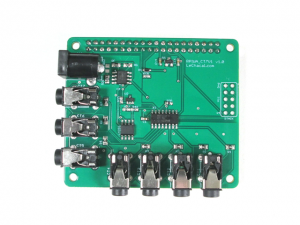RPIWA - Waveform Access & Continuous Monitoring
This product is under development. For stable products please refer to our RPICT range instead

RPIWA range aims to provide the same functionalities as RPICT range which is to compute RMS values and power related values at regular intervals. The bonus with RPIWA is the possibility to directly access the raw data. A developer can now perform his own RMS / power computations if desired. Or maybe plot the fft in real time. Or anything else you invented. A great benefit is the ability to perform continuous monitoring as the waveform sampling is now uninterrupted.
Let's compare RPICT and RPIWA in the current state.
RPIWA
- RMS and power related computations.
- Continuous monitoring.
- Limited Product (only RPIWA_CT7V1 for now).
- Not stackable.
- Not stable (we are still working on the software).
RPICT
- RMS and power related computations.
- No continuous monitoring.
- Stable and well established.
- Large range of product.
- Stackable.
If you are acquiring our product for the first time we recommend starting with RPICT units instead here.
Software installation
Get the package and install it
wget http://lechacal.com/RPIWA/rpiwa-realtime-v1.0.0_armhf.deb sudo dpkg -i rpiwa-realtime-v1.0.0_armhf.deb
Reading the data
Data are made available from a fifo located in /tmp/RPIWA.fifo. You can access the data with a simple cat command.
cat /tmp/RPIWA.fifo
An example of the output is shown below.
479169 -191.791 -0.009 -0.010 -0.009 -0.010 -0.017 -0.011 -0.025 479170 -223.441 -0.009 0.064 0.065 -0.010 -0.017 -0.011 -0.025 479171 -253.859 -0.009 -0.010 -0.009 -0.010 -0.017 -0.011 -0.025 479172 -277.439 -0.009 -0.010 -0.009 -0.010 -0.017 0.063 0.049 479173 -297.191 -0.009 -0.010 -0.009 -0.010 -0.017 -0.011 -0.025 479174 -312.319 0.065 -0.010 -0.009 -0.010 -0.017 0.063 0.049
The format normally depends on what is configured. In this instance the first field is the sample number followed by the instant value in Volts or Ampere for each channels.
If you prefer doing this with a Python program this is a good start for this below.
with open("/tmp/RPIWA.fifo") as f:
while True:
line = f.readline()
if not line:
break
print(line, end = "")Configuration
The configuration is /etc/rpiwa.conf
sudo nano /etc/rpiwa.conf
This is the content of the file:
# Calibration Values KCAL = 200.43 74.074 74.074 74.074 74.074 74.074 74.074 74.074 # OutputRate in milliseconds # Only valid for Output types CT8 and CT7V1 OutputRate = 1000 # RunType # 0-RAW 1-Instant 2-CT8 3-CT7V1 RunType = 1
KCAL
This is an array containing the calibration values.
RunType
This defines the output types that should apply. Enter a number between 0 and 3.
0-RAW Data are plain RAW data from the ADC. i.e. an integer between 0 and 4095.
1-Instant This is similar to raw but data are centred and scaled to physical value. Values are either representing actual voltage or amperage.
2-CT8 Not implemented yet. Will output rms data for each channels.
3-CT7V1 Compute power of V1 against all other CT for the RPIWA_CT7V1. Format is ... tbd
OutputRate
Does not apply to RunType 0 and 1. Determine how often data comes out for all channels at one time. This is set in milliseconds. Minimum acceptable is 0.32ms. Must be a multiple of 0.32.